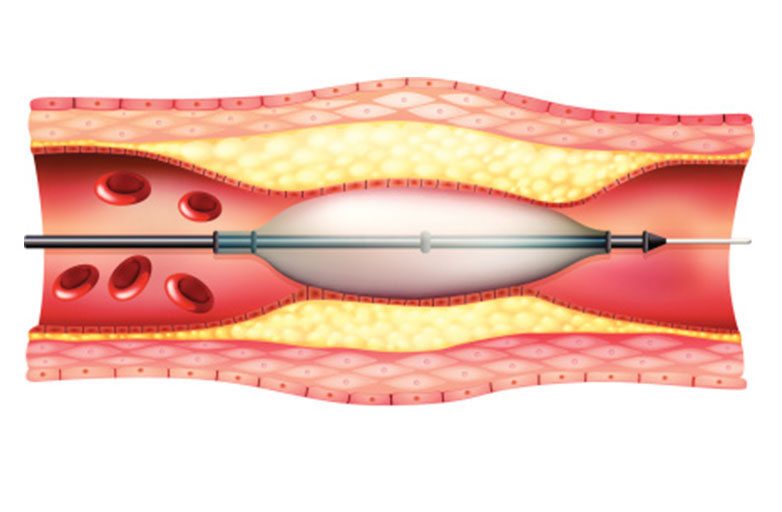Although medication and reducing risk factors – including lowering blood pressure and cholesterol, losing weight and stopping smoking – are often the first steps in managing PAD, angioplasty and stenting has proven to be a successful option to help restore blood flow through the arteries.
What is Angioplasty and Stenting?
Modern angioplasty is a procedure in which a thin, flexible tube called a catheter is inserted through an artery and guided to the place where the artery is narrowed. Once the tube reaches the narrowed artery, a small balloon at the end of the tube inflates for a short time. The pressure from the inflated balloon presses the plaque against the wall of the artery to improve blood flow. In most cases, a small, expandable tube called a stent is put in place at the same time. Reclosure of the artery is less likely to occur if a stent is used.

How do I know if I’m a candidate?
You may be a candidate for angioplasty and stenting if you have moderate to severe narrowing or blockage in one or more of your blood vessels (atherosclerosis) caused by PAD. Usually, you will also have symptoms of peripheral artery disease, such as pain in your feet or legs, leg cramps or foot sores that are slow to heal.
How is angioplasty and stenting performed?
Here is the best news. Balloon angioplasty is a minimally invasive vascular procedure, meaning the recovery time is most often much shorter than with traditional surgery. Dr. Lam will usually insert the angioplasty catheter through a small puncture point over an artery in your groin, your wrist, or your elbow. Although you may be given some mild sedation, he will usually want you to stay reasonably alert to follow instructions and describe your sensations during the procedure.
What are the benefits?
The primary benefit of balloon angioplasty and stenting is restored blood flow to the affected area due to a reduction in the narrowing of the artery, and then the stent keeps the opening created by the balloon from closing again. Most patients are able to return to normal activities shortly after the procedure and major complications are not common. However, as with any procedure, it is important to discuss all risks with your doctor.
Since the procedure is minimally invasive and utilizes only local anesthesia, hospital stay is usually not required and recovery is relatively simple.
Angioplasty and stenting advances
Being touted as a “game changer” in the treatment of peripheral artery disease, drug-coated balloons have shown promise in helping keep leg arteries open. New techniques involve using balloon angioplasty to open a narrowed artery as before, but the balloon is coated with the drug paclitaxel, previously used as a chemotherapy drug, which is applied to artery walls with the goal of preventing blockages from recurring.
We invite you to watch the animations below to get a better idea of how the modern angioplasty and stenting procedure is performed.

